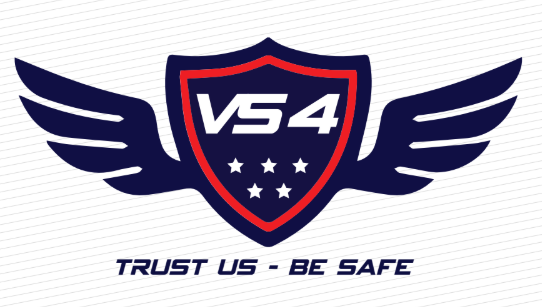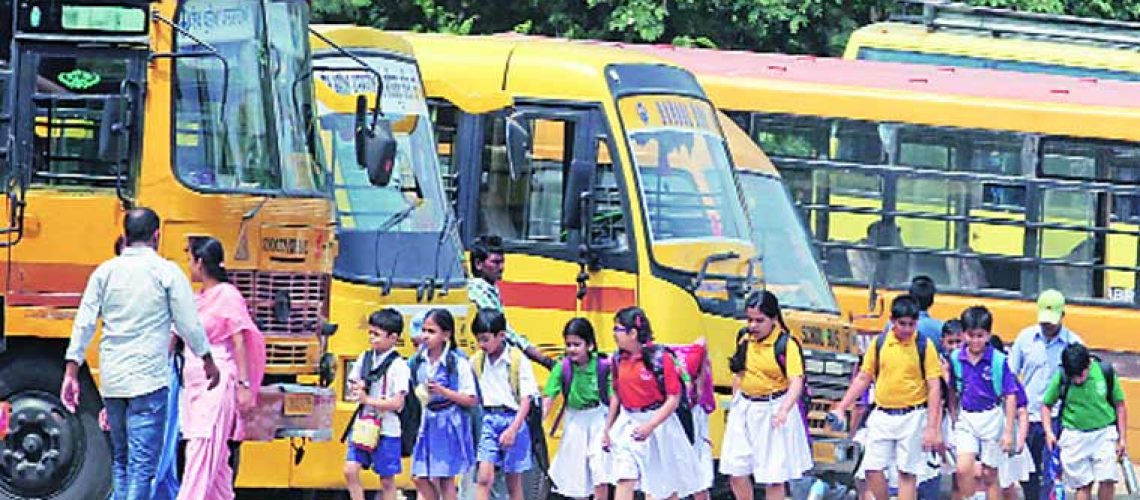HOW SAFE IS INDIA’S SCHOOL SECURITY SYSTEM-AN OVERVIEW
Today’s children are tomorrow’s citizens. Thus, it is vital to ensure good health and security for them. Fortunate Indian children spend most of his time in school.
To put things in perspective, first to the fifth grader is required to spend 800 hours and sixth to the eighth grader is required to spend 1000 hours at school spread across one academic year.
Safety and security are the least we can offer our children. But how safe are our schools? Are we taking enough safety measures in school for students?
Unfortunately, the answer is No. Indian schools are notoriously low on security. Crime against children has increased by 11% between 2015 and 2016, as per NCRB reports.
The main reason why our children are exposed to danger is the lack of security management. Continue reading to know why and how we can improve our school security.
Over the last few years, students have had the misfortune of experiencing dreadful and fatal incidents.
- The horrifying murder of a hapless grade 2 student of Ryan International School, named Pradhyuman Thakur, left the entire nation shattered. And to make matters worse, the suspect was a student of the same school.
- Six-year-old-girl was allegedly gang-raped inside the establishment of an upscale school in Bangalore. Two gym instructors were charged for raping the child
- A leopard was spotted in a school in Marathahalli after breaking into the school. Thankfully, no students were harmed because it was a weekend. The tense drama ended sometime after the forest officials shot the leopard with tranquilizers, but not before the leopard injured a few people.
- A retired government employee who was teaching in a private school in Kanakpure Road apparently stripped a girl and molested her. A case was filed against the 63-year-old teacher who had abused 7 girls in 45 days.
A variety of such saddening incidents happen to our children such as kidnapping, sexual abuse, ragging, exploitation.
According to the National Crimes Records Bureau, a total of 14,913 cases were filed under the ‘Protection of Children from Sexual Offences Act’, 2012 in the year 2015.
As shocking as it may sound, it is true. So how do we deal with such threats?
Understanding The Problem: Why, Where and How?
The key to solving a problem is to understand it first. Where are we falling short? How can we improve our security system?
Schools Buses
Children are very vulnerable when they are outside their classes/school premises and waiting for their respective busses. This is the time when criminals try to lure innocent children. Children should never be left alone and unwatched.
A security guard should be deployed to watch over the kids before the bus picks them up and they should also be safely escorted back to their homes by security.
The installation of GPS in all school buses has been a boost.
School Security System
An able team of security guards should be deployed across all four corners of the school, and even a minor threat should be taken seriously.
Fences and barbed wires should be installed wherever required to quell trespassing. Student’s parent/guardian should be given an ID card, without which they should not be allowed to enter school premises.
The school should perform background/police verification and psychometric evaluation checks on teaching staff, non-teaching staff, bus drivers, peons, and security guards.
The security agencies hired by the school should get the background and police verification done of all their guards. Necessary safety measures should be taken by the school in case of any threat/attack.
Internal Security Surveillance
Fully working CCTV cameras should be installed in every nook and corner of the school premises. A special team for surveillance should be deployed to monitor the same.
Even the slightest of activity that arouse suspicion should be dealt with austerity. Whether be it ragging or child abuse.
Having separate washrooms for teaching staff and non-teaching staff, male and female. A lady should be made to guard female washrooms.
The staff should also be trained in picking up psychological signs from children and then counseling them. Anti-bullying posters should be put out, promising strict action against it.
Attendance
Keeping tabs of visitors is extremely critical in cases when crimes do occur. It will be a lot easier to trace back to the suspects.
Each and everyone should be asked to fill the book register. And children should not be allowed to leave the school premises during class hours.
This is the most effective way by which children can be kept safe. A biometric security system will be a welcome step.
Security Audits
Periodic security audits by a professional agency will help in timely identifying gaps and enforce corrective action. Security audits should include an assessment on the efficacy of the guarding force, sensors and alarms, security processes, and inspection of fringe areas.
Pre-emptive Measures
Having the school campus away from water bodies, highways, railway tracks, canals lakes. The buildings should be well built using quality materials, capable of withstanding natural disasters. Schools should have accessible emergency exits.
More often than not, children are exposed to live electricity wires which can fatally injure them. The security system of schools should make sure children are protected from such dangers.
Natural calamities & how to deal with them.
Fire Hazard
Fire Hazards are very dangerous as we all know. The horrifying and gruesome school fire accident in Tanjore district in 2004 has shown us the lack of fire safety planning and precaution our school are equipped with.
Here are some ways of dealing with fire hazard:
- Fire safety equipment should be installed
- Plan beforehand a sound evacuation
- Every floor must be equipped with fire extinguishers, sprinklers, and smoke alarms
- Teachers and students should be made to undergo fire safety drills
- Educating the children on how to deal with fire
- Making children and school staff aware of safety precautions
- Having emergency exits
- Every school must follow NCB’s guidelines.
Earthquakes
Earthquakes strike without warning, so it is the school’s responsibility to train the students in case of such an eventuality. Thoughtful planning and preparation will help ensure the safety of students and staff. Here are some steps that should be taken:
- Make sure the buildings are built to earthquake standards.
- Securing furniture by fixing any tall and heavy equipment to the wall
- Students should be aware of safety procedures, like taking cover under their desks until the quaking stops.
- Holding Earthquake drills
Along with the above natural calamities, the school should also be prepared for calamities caused by humans, like terror attacks and violence. Having armed, armoured and seasoned security guards protecting school premises will definitely quell any such threats.
How Security Flaws Impact a School?
- It gives the school bad publicity
- Loss of reputation, which reduces the number of admissions
- Attrition between staff and students
- Legal hassles for school management
- It causes low esteem/morale in students/staff

It is always easier said than done. Of course, putting into practice the above measures will improve the security of schools, but a major overhaul is required to effectively curb crimes against children.
How VS4 Conducts School Security?
VS4 ensures that school staff remains focused on their primary responsibility of imparting education and leaves the security of the school entirely in the hands of professionals. It undertakes the following –
- Securing of Premises – entry/exit, school perimeter, and electronic sensors.
- Security during – transit, stay back, and a process for accounting for the absence
- Analysis of neighboring premises- layout and impact
- Evaluation of safety for – design, electric, fire, chemical hazards, and force majeure calamities
- Formulation of specific procedures to prevent and handle emergencies such as fire, earthquake, bomb threat, school bus hostage/kidnapping, chemical accident, children carrying weapons to school, civil disturbance, medical emergency.
- Checklists to manage contingencies and regular drills and rehearsals for execution.
- Setting up processes for the recruitment and staffing process
- Handling of contractual staff
- Education & awareness building on security – for a child, teachers, nonteaching contractual staff and parents
- Safety peculiarities for children with special needs
- Initiation of feedback mechanisms for real-time information on security breaches.
- Developing a mechanism for reporting a case of abuse
- Interface with enforcement agencies
- Post-crisis support in terms of investigations and evacuations.

